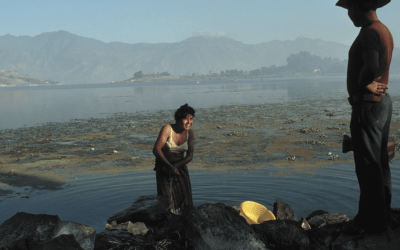Central America Competitiveness Project
A Harvard Legacy
Harvard University has played a key role in developing a “culture” of competitiveness in the Central American region and especially in my country, Guatemala.
The 1996 Guatemalan Peace Accords were a turning point in creating an environment of peace for the first time in more than one hundred years, and bringing hope for social change and economic growth in our region. With the war over, it was time to face the challenges of achieving a sustainable economic development and protecting the natural environment while advancing social and human development.
The Central America Project began in 1996 under the sponsorship of the Harvard Institute for International Development (HIID). Led by senior faculty members at the university, the project aimed to provide research, analysis, and policy recommendations that focused on the long-term growth and economic integration vital to Central America´s development. The three-year initiative was led by HIID, along with other Harvard faculties, and the Instituto Centroamericano de Administración de Empresas (INCAE), a Central American business school founded in the early 1960s by Harvard Business school faculty members.
Through short-term research and analysis on urgent problems of the region, the project members collected data and built the understanding necessary to form policy recommendations. These were delivered to the regional governments and formed the basis for a series of studies that explored the strength of the economy, the prospects for the tourist industry, the ecologically sound use of natural resources, and the judicial system with a focus on property rights.
Guatemala was the only country of the region to implement a joint public-private effort in the spirit of these studies, the National Competitiveness Program (PRONACOM), founded in 1998 and continuing under three different democratic governments. This has been an initiative I have followed very closely since its inception: I was the first Executive Director (1998-2000) of the Program and was Presidential Commissioner of Competitiveness and Investment during the Berger administration (2004-2008).
With the understanding that competitiveness involves all the sectors of society, the initiative to develop a National Competitiveness Agenda for Guatemala needed the active participation of government entities, manufacturing and labor sectors, academic institutions, journalists, civil society groups and the international community. Accordingly, we held 19 dialogue workshops bringing together Guatemalan men and women from every social sector and every region. The resulting report, the National Competitiveness Agenda 2005-2015, pulled together the vision, feedback and expectations of almost 500 Guatemalans from all sectors of the society. It incorporated the input of many studies and proposals made previously by individual leaders or institutions, and was especially inspired by the methodology that the Central America Project from Harvard University and INCAE brought to our region in the late 1990s.
The National Competitiveness Agenda of Guatemala (2005-2015) is based on the cooperation of the private and public sectors. It seeks to achieve a healthy, educated, trained and inclusive society; modernization and institutional strengthening; balance and environmental sustainability; decentralization and local development; technological and productive infrastructure; and strengthening production and export.
The Agenda presents proposals for action and economic and social policies in the short, medium, and long terms on the national, regional, and municipal levels.
Local economic development is a key element in the strategy for social and economic development of Guatemala. It can only be achieved if the country moves forward in its decentralization, strengthening local governments and encouraging social participation. This process requires investment and making institutional adjustments that strengthen rural development in an integrated manner and improve the ties between different cities around the country in a framework of equity and respect for cultural and ethnic diversity.
Harvard University began an effort 15 years ago that has contributed to develop a “culture” of competitiveness in the Central American region that is meant to reduce many existing gaps and promote a sustainable development for all the citizens of our region. Competitiveness is not a sprint of 100 meters! … It is a marathon and we need to keep going and continue on the right direction!
Fall 2010 | Winter 2011, Volume X, Number 1
Related Articles
Guatemala: Editor’s Letter
The diminutive indigenous woman in her bright embroidered blouse waited proudly for her grandson to receive his engineering degree. His mother, also dressed in a traditional flowery blouse—a huipil, took photos with a top-of-the-line digital camera.
Making of the Modern: An Architectural Photoessay by Peter Giesemann
Making of the Modern An Architectural Photoessay by Peter Giesemann Fall 2010 | Winter 2011, Volume X, Number 1Related Articles
Increasing the Visibility of Guatemalan Immigrants
Guatemalans have been migrating to the United States in large numbers since the late 1970s, but were not highly visible to the U.S. public as Guatemalans. That changed on May 12, 2008, when agents of Immigration and Customs Enforcement (ICE) launched the largest single-site workplace raid against undocumented immigrant workers up to that time. As helicopters circled overhead, ICE agents rounded up and arrested …




